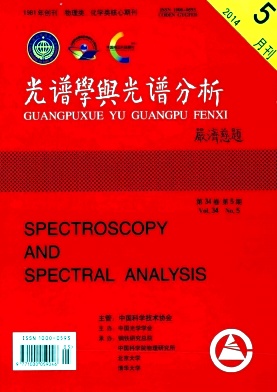冬小麦冻害胁迫高光谱分析与冻害严重度反演
[1] WANG Jian-lin, LIN Ri-nuan(王健林, 林日暖). Agricultural Meteorological Disasters in Western China(中国西部农业气象灾害). Beijing: Beijing Meteorology Impress(北京气象出版社), 2003. 1.
[2] DONG Yan-sheng, CHEN Hong-ping, WANG Hui-fang, et al(董燕生, 陈洪萍, 王慧芳, 等). Transactions of the Chinese Society of Agricultural Engineering(农业工程学报), 2012, 28(20): 172.
[3] Li Jing, Jiang Jinbao, Chen Yunhao, et al. New Zealand Journal of Agricultural Research, 2007, 50: 1031.
[4] Wu Chaoyang, Niu Zheng, Tang Quan, et al. Agricultural and Forest Meteorology, 2008, 148: 1230.
[5] Liu Meiling, Liu Xiangnan, Ding Weicui, et al. International Journal of Applied Earth Observation and Geoinformation, 2011, 13: 246.
[6] ZHANG Rui, MA Jian-wen(张睿, 马建文). Geomatics and Information Science of Wuhan University(武汉大学学报·信息科学版), 2009, 34(7): 834.
[7] YANG Xiao-hua, WU Yao-ping, HUANG Jing-feng(杨晓华, 吴耀平, 黄敬峰). China Series C-Life Sciences(中国科学C辑: 生命科学) 2009, 39(11): 1080.
[8] Hansen P M, Schjoerring J K. Remote Sensing of Environment, 2003, 86: 542.
[9] Martin M E, Plourde L C, Ollinger S V, et al. Remote Sensing of Environment, 2008, 112: 3511.
[10] LU Yan-li, BAI You-lu, YANG Li-ping, et al(卢艳丽, 白由路, 杨俐苹, 等). Plant Nutrition and Fertilizer Science(植物营养与肥料学报), 2008, 4(6): 1076.
[11] Neil Lawrence. The Journal of Machine Learning Research, 2005, 6: 1783.
[12] Zhang M, Liu X, O’Neill M. International Journal of Remote Sensing, 2002, 53(6): 1095.
[13] Cheng X, Chen Y R, Tao Y, et al. Transactions of the ASAE, 2004, 47(4): 1313.
[14] Liu Y, Chen Y R, Wang C Y, et al. Applied Engineering in Agriculture, 2006, 22(1): 101.
[15] ElMasry G, Wang N, ElSayed, et al. Journal of Food Engineering, 2007, 81(1): 98.
[16] DUANG Zhong-hong, DONG Fang-hong, ZHANG Lu-xian(段忠红, 董方红, 张路线). Agricultural Technology & Equipment(农业技术与装备), 2010, 198: 21.
王慧芳, 王纪华, 董莹莹, 顾晓鹤, 霍治国. 冬小麦冻害胁迫高光谱分析与冻害严重度反演[J]. 光谱学与光谱分析, 2014, 34(5): 1357. WANG Hui-fang, WANG Ji-hua, DONG Ying-ying, GU Xiao-he, HUO Zhi-guo. Monitoring Freeze Stress Levels on Winter Wheat from Hyperspectral Reflectance Data Using Principal Component Analysis[J]. Spectroscopy and Spectral Analysis, 2014, 34(5): 1357.




